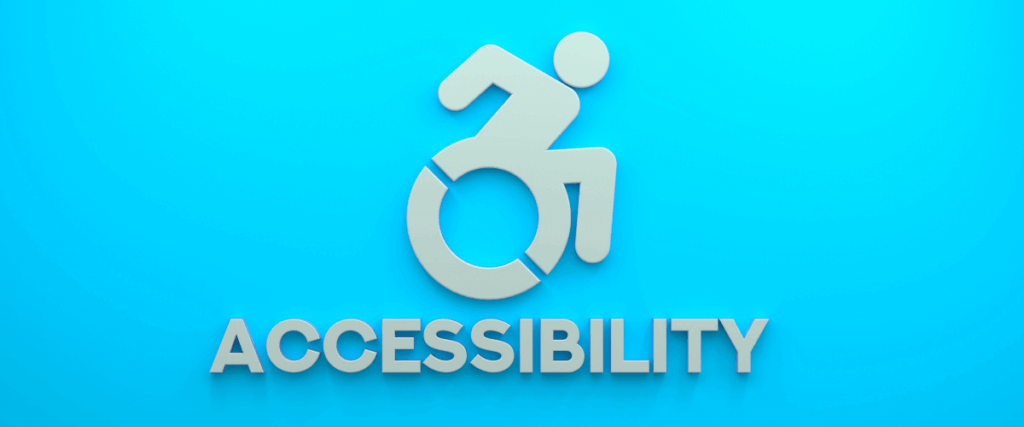Accessibility overlays are automated solutions that inject JavaScript snippets directly into a website rather than update the source code. They are generally in the form of a widget, app, plugin, or toolbar.
There are also tailor-made overlay solutions that promise to address accessibility issues of a publishing system better than the generic tools. They are specific to a website’s code but do not change its code.
The popular assistive technology devices grow as businesses become aware that they must have an accessible site for ethical and legal reasons. They lack the resources or knowledge to address accessibility issues adequately.
They turn to out-of-the-box overlay tools that sound appealingly simple, meaningful accessibility improvements to avoid an ADA lawsuit. They do not automatically fix accessibility issues.
Accessibility overlay vendors make false guarantees that a website will be 100 percent accessible and make a business feel they have done their due diligence. These tools have a limited scope. Using overlays is just a band-aid for accessibility issues. The number of lawsuits is increasing against companies that use overlay plugins.
Are Overlays Bad for Accessibility?
There are several reasons accessibility overlays are bad.
- They do not make a website WCAG compliant.
- They fix minor problems, but severe user experience issues are not repaired.
- The conflict overrides the existing technologies, such as screen readers.
- There is no comparison to manual accessibilities audits.
- They do not address the properties of mobile devices.
- They do not provide an equal website experience for users with disabilities.
Many international accessibility experts and disabled users agree overlay tools are not helpful. Over 570 global accessibility experts signed a statement on the ineffectiveness of overlays. A survey of web accessibility practitioners found 72 percent of disabled accessibility experts said overlays were either ‘not very’ or ‘not at all effective.

Only 2.4 percent rated them as ‘very effective.’ Overlays cannot pick up serious issues, such as
- Content inaccessibility
- Good focus order for those who use a keyboard to tab around a website
- Incorrect heading structure
- Missing links or unhelpful link text
- Unlabeled form fields
Accessibility Overlays

Some overlays provide minimal accessibility for a screen reader user. They are typically small icons found on a web page. By clicking the icon, users with disabilities open an accessibility options menu.
The menu is usually limited to basic accessibility features that screen readers already address, like halt animation, read text aloud, color contrast, text size, etc. They are wildly ineffective solutions that fail to make tangible accessibility improvements while forcing users with disabilities to learn another accessibility tool to engage with the content. That is, if they can locate the icon at all.
Overlay tools significantly fail users and pose some problems for the company. The overlay accessibility inadequacies are well-known in the accessibility industry. Most experts agree they can only detect 20 to 30 percent of issues on a website.
This means 70 to 80 percent go undetected and is not addressed. Overlay tools cannot remediate: Alt text, Ambiguous anchor text links, Closed captions, Consistent identification, Error prevention, Error suggestions, Focus order, Images of text, Incorrect heading structure, Keyboard only usage, Keyboard traps, Locked display orientation, Minimum width, Misidentified language, Missing links, Parsing, Unlabeled or mislabeled form fields, Use of layout tables, and Zoom disabled.
Do Accessibility Widgets Work?
Widgets are not substitutes for accessibility measures. Accessible websites must follow the four principles of the Web Content Accessibility Guidance
- Perceivable
- Usable
- Understandable
- Robust
Widgets support some perceptibility. Users can visually highlight focused elements, adjust the font size, or increase color contrast. Highlighting focused elements is helpful when using the Tab key to jump from link to link. Users quickly lose orientation without it.
Some widgets add alternative image text with the use of artificial intelligence. They cover some needs but not nearly all of them. Often people with disabilities use assistive devices like screen reader software and another input device instead of a keyboard and mouse.
Widgets offer improvement and alternatives for visually impaired and blind people with a screen enlarger or screen reader. They need a working technique and a universal design that does not interfere with assistive technologies or software.
Digital Accessibility
Digital accessibility makes content for people with disabilities usable. The goal is to make it entirely usable and available to everyone, including those with disabilities. Anything people do or read in digital form must be created to allow people with disabilities to use it independently.
If digital content was built without considering accessibility, there are automated and manual tests to help update content to make it more accessible. Access to digital platforms and websites is essential for independent living, education, and employment.
Digital accessibility is often a legal requirement. The Americans with Disabilities Act, Title I, prohibits discrimination based on disability in pay, hiring, recruitment, and related aspects. Discriminating based on disability in local and state government services is prohibited in Title II.

Title III prevents equal access to services of public accommodations and services discrimination. Accommodations and services provided through digital channels, such as apps and websites, have been interpreted as ADA-applicable.
How Do You Achieve Web Accessibility?
A checklist of the most common problems includes
- Appropriate alt text for images
- Synchronized closed captioning
- Tab-through navigation
- Text with ample size and color contrast
- Unique page titles
- Unique styling links
The above is a baseline. There are smaller, more nuanced items related to a website’s content. It is best to ensure users can navigate logically on a website with a keyboard. It provides visual clues for those who are visually impaired.
Solving Accessibility Issues
Automated testing strategies can only do so much. Uncovering other accessibility challenges on a site requires robust manual testing strategies from a company like ADA Site Compliance. The testing works best when both mantras are used.
Automated testing identifies errors within its capabilities. An accessibility scanning tool detects accessibility issues such as
- Hidden drop-down menus
- Improper tab order
- PDF exclusion1
- Screen magnification issues
- Unreadable tables
A recent stern warning from the National Federation of the Blind caused many companies to consider their solutions. The stance is welcomed by a screen reader user relying on accessibility solutions.
Accessibility overlays often dance between hindering and helping. They do not live up to the accessibility solutions they claim. In 2020, more than 250 lawsuits were filed against companies using widgets and accessibility overlays.
They cited the failure to deliver accessible experiences for blind users. Providing accessibility for all site users is not a quick fix. A comprehensive digital accessibility strategy is required. There are three vital components.
- Ongoing learning
- Pairing automated and manual audit testing
- Ease in reading and understanding
Addressing Accessibility Overlay Problems
When overlays conduct the fixing of the errors it detects, your team is in the dark about the errors being fixed. It prevents learning from mistakes on the site and avoiding them in the future.
If you end an agreement with an overlay provider, the errors return when they pull the script. They are hard to identify because your team did not know where they were. Incorporate lifelong learning that allows the team to review and understand accessibility issues on a website and prevent errors from reappearing.
It is the best means of ensuring a solution continues to provide value. While a manual testing strategy can be handled in-house, a manual testing service, such as ADA Site Compliance, is recommended.

Accessibility scanning tools should present findings that are not written only for developers. If they cannot be explained, they are of no use. Technical jargon is not helpful. The more issues are explained, the better the potential for benefiting and learning from the process.
The language used to convey findings is integral to delivering long-term empowerment. Do not discount the importance of a customer service team and service provider like ADA Site Compliance.
What Are Accessibility Problems?
Applying automatic fixes to the issues overlay solutions detect risks of breaking a website’s user interface. Changing the structure affects how a page is rendered. No reputable accessibility company will stand behind potential performance problems.
Overlay Solutions Fail to Address Mobile Properties
Accessibility issues extend beyond websites to all digital properties. Unless digital that includes apps, the mobile site, and the website are alike, all digital properties need to be fully remediated.
Users who rely on mobile devices are increasing. You cannot afford to ignore this channel. Mobile traffic accounts for half the worldwide web traffic. By 2025, smartphones will be the only device 72.6 percent of internet users worldwide use to get online.
Sixty-one percent of people do not return to an inaccessible mobile site. Mobile apps and sites are increasingly called out in lawsuits by the ADA. From September to November 2020, almost 20 suits were filed that cited mobile apps or websites. Do not waste time on accessibility solutions that address only part of the problem.

Performance and Privacy Risks
It is no secret that the more you have on a website, the slower it performs. Accessibility overlays are scripts usually hosted on the vendor’s server, which means you have no control over security or speed.
If the vendor’s website is hacked, yours could be next. When a vendor’s server or overlay script is slow, it likely impacts your website. Customer patience is low. Forty percent of consumers wait only three seconds for a website page to load before abandoning the site. Do you want to give consumers a reason to walk away? An ineffective accessibility solution is not worth the risk. Contact ADA Site Compliance today for a free site scan, and let us help your website with 100% accessibility compliance.
Share via:

Speak With An Expert Now
Have a question?
We’re always here to help.
The ADA prohibits any private businesses that provide goods or services to the public, referred to as “public accommodations,” from discriminating against those with disabilities. Federal courts have ruled that the ADA includes websites in the definition of public accommodation. As such, websites must offer auxiliary aids and services to low-vision, hearing-impaired, and physically disabled persons, in the same way a business facility must offer wheelchair ramps, braille signage, and sign language interpreters, among other forms of assistance.
All websites must be properly coded for use by electronic screen readers that read aloud to sight-impaired users the visual elements of a webpage. Additionally, all live and pre-recorded audio content must have synchronous captioning for hearing-impaired users.
Websites must accommodate hundreds of keyboard combinations, such as Ctrl + P to print, that people with disabilities depend on to navigate the Internet.
Litigation continues to increase substantially. All business and governmental entities are potential targets for lawsuits and demand letters. Recent actions by the Department of Justice targeting businesses with inaccessible websites will likely create a dramatic increase of litigation risk.
Big box retailer Target Corp. was ordered to pay $6 million – plus $3.7 million more in legal costs – to settle a landmark class action suit brought by the National Federation of the Blind. Other recent defendants in these cases have included McDonald’s, Carnival Cruise Lines, Netflix, Harvard University, Foot Locker, and the National Basketball Association (NBA). Along with these large companies, thousands of small businesses have been subject to ADA website litigation.
Defendants in ADA lawsuits typically pay plaintiff's legal fees, their own legal fees for defending the litigation, and potential additional costs. In all, the average cost can range from tens of thousands of dollars, to above six figures. There are also high intangible costs, such as added stress, time and human capital, as well as reputational damage. Furthermore, if the remediation is incomplete, copycat suits and serial filers can follow, meaning double or triple the outlay. It's vital to implement a long-term strategy for ensuring your website is accessible and legally compliant.



